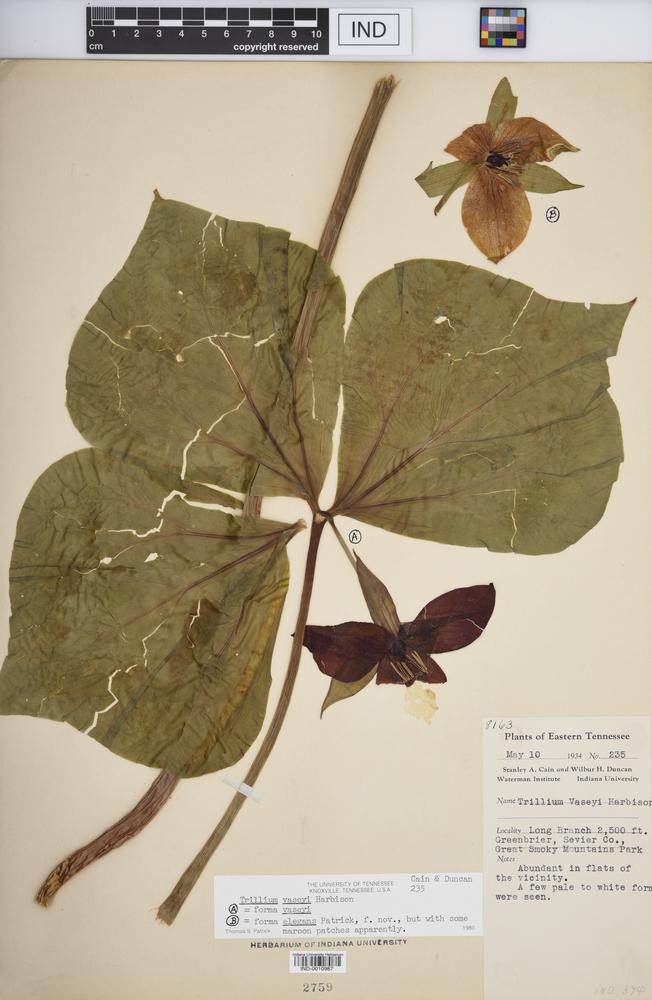|
Trillium vaseyi
 No occurrences found (redirected from: Trillium erectum var. vaseyi (Harb.) H.E.Ahles) |
|
|
Family: Melanthiaceae
sweet wakerobin
[Trillium erectum var. vaseyi (Harb.) H.E.Ahles] |
|

